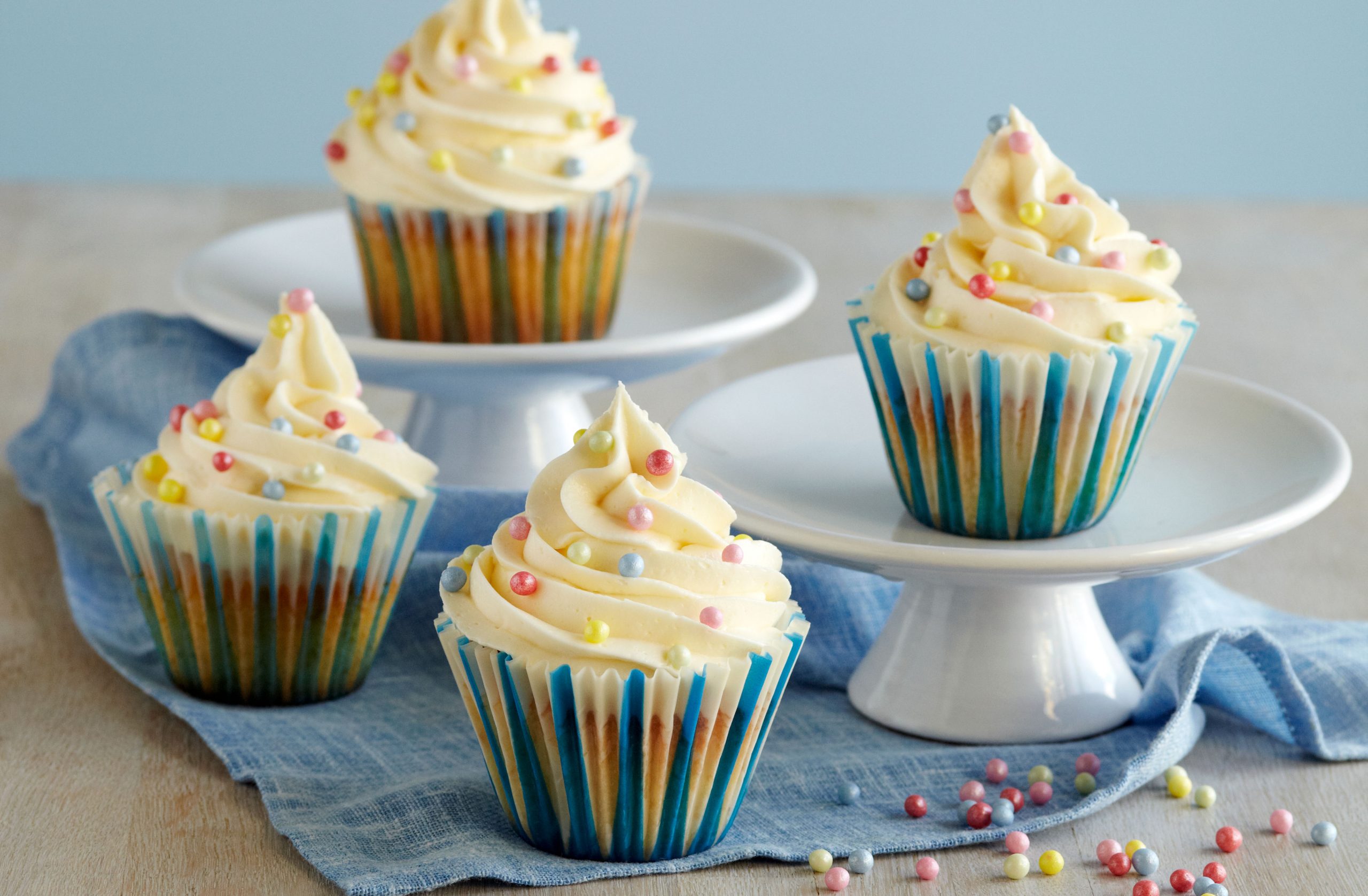Dairy-free diet: what are the benefits and what can you eat?
Some people find dairy products really hard to digest or have a dairy or lactose intolerance. Follow our dairy-free advice and plan to help you maintain a healthy diet


Adopting a dairy-free diet for health, environmental or ethical reasons is easier than you think, thanks to the wide range of alternative products now available.
Many people may find themselves having to follow a dairy-free diet due to an allergy to dairy products or lactose intolerance (an inability to digest milk sugar). For those with an allergy to dairy products, removing them from their diet may be the only option. Likewise, if you have an intolerance to dairy you may find that cutting it out of your diet can reduce stomach bloating and trapped wind.
Researchers believe that as much as 65-70 percent of the adult population worldwide has an intolerance to lactose. Meanwhile, other people choose to adopt a plant-based diet for environmental or ethical reasons and therefore follow a vegan diet that eliminates both dairy and meat products.
Registered dietitian Sophie Medlin says: “A dairy-free diet involves cutting out all dairy products from the diet including cheese, milk, butter, cream, and ice cream. “While it may seem simple, butter and milk, as well as milk powder, are sneaking into many foods where you might not expect it such as bread, ready meals, and even some crisps.”
Although there are benefits to following a dairy-free diet, it is important that any lost nutrients are made up in other ways to avoid health problems. Luckily there are now plenty of dairy alternatives and foods for vegans now available, which can boost your protein and calcium levels.
What is a dairy-free diet?
A dairy-free diet is one that cuts out all products which contain dairy of any form. This includes milk, cheese, yoghurt, ice cream, butter, and cream. Individuals may choose to remove dairy from their diet for a number of reasons, including an allergy, intolerance, or other health, environmental or ethical reasons.
Researchshows that along with peanuts and tree nuts, cow’s milk is one of the most common foods capable of causing anaphylactic reactions. So as well as cutting out specific dairy products, people with a severe allergy will also need to avoid products that contain traces of dairy, such as some bread, pasta, and cereals. It is therefore important to check the ingredients list on the packaging carefully, especially with processed food.
Parenting advice, hot topics, best buys and family finance tips delivered straight to your inbox.
Sophie Medlin, who is director of City Dietitians, says: “Some people have an allergy to the protein in cow’s milk. This is actually relatively common in childhood but most children grow out of it.“Other people have lactose intolerance, which is where the sugar in dairy products - lactose - leads to wind, bloating, and diarrhoea. This is because it isn’t absorbed and so enters the colon where it is rapidly fermented by bacteria.”
While in the past it may have been difficult to find similar dairy-free products to your favourite foods, there are now lots of alternative products available.Plus, there are also lots of dairy-free recipes, such as sweetcorn pancakes, ramen soup, and even these dairy-free cupcakes.

What are the benefits of a dairy-free diet?
✅ Reduction in allergic reactions
For anyone with a dairy allergy or intolerance, the benefits of a dairy-free diet will be the chance to minimise allergic reactions and relieve painful side effects. Allergies to dairy products can lead to a range of symptoms from a rash and an itchy mouth or lips, to wheezing and vomiting. In very severe cases it can also cause anaphylaxis, which can in some cases be fatal
Studies show that between 2% and 7.5% of children under one-year-old have a dairy allergy, but often they grow out of it over time. However, some do not and must always follow a dairy-free diet.
✅ Reduction in uncomfortable side effects for lactose intolerance sufferers
Being lactose intolerant is an inability to digest lactose (milk sugar) due to low levels of the enzyme lactase in the small intestine of the gut.When this happens undigested lactose passes into the large intestine - the colon - where it can cause symptoms including: diarrhoea, bloating, and abdominal pain.
While it is believed that up to 70% of the adult population has an intolerance to lactose, studies show that some people are asymptomatic and have no symptoms.
Other research has also shown that individuals with lactose intolerance may not need to completely eliminate dairy products from their diet, as yogurt and hard cheese are usually well tolerated.
✅ Benefits for acne
An analysis of 12 studies found that dairy could be associated with an increased chance of acne for individuals aged 7 to 30. However, it is recommended that you speak to a doctor or dermatologist before removing dairy from your diet for these reasons.
✅ Reduced impact on the environment
Studies have shown that one of the greatest contributors to global warming is greenhouse gasses from cows. Making the decision to go dairy-free therefore reduces your impact on the environment, especially if this goes along with a vegan diet.
However, registered dietician Sophie Medlin warns that people must also consider the potential health impacts of removing dairy from their diets for these reasons.She told us: “Many people started exploring a dairy-free diet around 10 years ago when the clean eating movement branded dairy as ‘unclean’. With the popularity of the Netflix documentary ‘cowspiracy’ many others joined the dairy-free movement and some people now choose to avoid dairy for environmental reasons.
“However, it is important to note that no healthcare professionals or public health authorities have recommended cutting out dairy. While there are compelling ethical reasons to consider your intake, farming practices in the UK are vastly different from the US with clear legislation against the use of hormones and antibiotics and far higher welfare standards. Furthermore, those cutting out dairy for environmental reasons need to take a view on the replacement products they use which can be equally devastating for the environment.”
Foods to avoid on a dairy-free diet
The reason why you are following a dairy-free diet will affect which foods you need to avoid. If you have a dairy allergy or are following a vegan diet, you will need to be particularly careful and check all food labels carefully to make sure that they do not contain milk products, or that they have not been made in a place where cross-contamination is possible. However, if you have an intolerance to dairy you may be fine to eat some foods which contain small amounts of milk products.
This study also found that people who are lactose intolerant may not need to completely eliminate dairy products from their diet, as both yoghurt and hard cheese are well tolerated.
Here is a list of foods that you may need to avoid when following a dairy-free diet:
- All milk and milk products - whole, semi-skimmed, skimmed, condensed, evaporated, powdered, milkshakes
- Fats - Butter, margarine, single and double cream, sour cream, buttermilk
- Cheese - All hard and soft cheese, cottage cheese, cream cheese
- Desserts - Yogurt, ice cream, custards, rice pudding, cream-based desserts such as creme brulee or panna cotta
- Sweets - Milk chocolate, white chocolate, fudge, caramels
Foods to double-check
When following a dairy-free diet you should also remember to check the packaging of food you may not expect to contain milk products, such as bread, cereals and pasta.
Keep an eye out for the following ingredients, which are all made from milk:
- Lactose
- Whey
- <Ghee
- Casein
- Calcium
- <Lactoglobulin
- Lactalbumin
Be sure to check the labels of foods including:
- Bread
- Biscuits, cakes, and pastries
- Cereals
- Salad dressings/mayonnaise
- Processed food, for example, meat coated in breadcrumbs
- Soup
- Pasta
- Dark chocolate
- <Crackers
- Processed food
Dairy-free chocolates
Luckily for chocolate lovers, there are now plenty of dairy-free options available. While some companies offer dairy-free sweet treats, there are also companies like Moo Free which offers completely dairy-free chocolate.
Here are some of the dairy-free chocolates available to buy:
- Anything from Moo Free< - a dairy-free chocolate brand
- Anything from NOMO - a vegan and free from chocolate brand
- Hotel Chocolat’s Vegan Sleekster
- Nakd’s Chocolish bars
- Tony’s Vegan Classics Gift Box
How to replace essential nutrients
If you are planning to follow a dairy-free diet you must find ways to replace essential nutrients found in dairy products such as calcium, iodine, and protein. Otherwise, this could lead to a nutritional deficiency. Luckily there are many alternative foods you can incorporate into your diet in order to replace these.
Dietician Sophie Medlin says: “In order to safely come off dairy, you need to make sure you look for alternative sources of calcium, B vitamins, phosphorus, vitamin A, magnesium, zinc, and iodine.“If you’re still eating other animal products, most of these will be fine apart from the iodine and the calcium. Iodine can be found in iodised salt or seaweed products. Calcium can be found in non-dairy sources such as fortified milk replacements, tofu, nuts, canned sardines, dried figs, and other fortified foods.
“If you have cut out dairy and all animal products, you need to be far more comprehensive in replacing the nutrients you’re missing from animal products.”
Calcium It’s very important that you get enough calcium in your daily diet, as this is vital for the health of your bones and muscles. According to the NHSadults aged 19 to 64 need 700 milligrams (mg) of calcium a day.
While it is possible to have calcium-fortified dairy alternatives, such as soya milk, yoghurts, and cheeses, you can also boost your calcium intake by eating other foods. Some easy ways to add calcium to your dairy-free diet is to top up on your greens, such as kale, okra, broccoli and green beans. Butternut squash and sweet potatoes are also high in calcium.
If you’re able to eat fish, sardines and pilchards are also great sources. Or, if you are following a vegan diet, tofu is a good alternative. Another quick way to boost your calcium intake is to sprinkle seeds such as chia, sesame, and sunflower onto your salads. Plus a handful of edamame beans or almonds is a great way to add some calcium to your snack time.
Iodine Iodine is needed to make your thyroid hormones work, which helps to keep cells and the speed at which chemical reactions take place in the body healthy. The NHS suggests that adults need 140 micrograms (μg) of iodine a day. Good sources of iodine include fish and shellfish. It can also be found in cereals and grains and some fortified milk replacements.
Protein Protein, which is found in dairy, is an important energy source for your body. It is also vital for the growth of bones, muscles, skin, hair and nails. The NHS recommends women should have a recommended daily intake of 45g of protein and men 55.5g.
If you eat meat, red meat like beef, lamb and pork are all protein-rich. Likewise, so is poultry like chicken, turkey and duck, as well as eggs.
However, for a vegan diet you can top up your protein levels with beans and legumes, such aslentils, chickpeas, peas, runner beans, broad beans, kidney beans, butter beans, haricot beans, cannellini beans, pinto beans and borlotti beans. Soy, tofu and miso are also great sources.
Recipes such as vegan protein pancakesand this easy-to-make soya bean and pea soup will help to boost your protein intake.
Other dairy-free alternatives:
- All fruit and vegetables
- Milks - Rice, oat, almond, hazelnut, coconut, quinoa and potato milks
- Yoghurts - Coconut, almond
- Vegan cheeses
- Butter - nut butter (such as this easy to make pistachio butter with matcha, coconut butter
- Sorbets
If you are in doubt about whether a product contains dairy, look for foods that has “dairy-free” or “suitable for vegans” messages on its packaging.
It’s also worth remembering that alternative milks do not provide all of the same nutritional benefits as cow’s milk. This study looked at soy, almond, rice and coconut milk and found that soy milk is nutritionally the best alternative to cow’s milk.
7 tips for eliminating dairy from your diet
Eliminating dairy from your diet may feel daunting at first, especially if you currently consume a lot of it. But by following some simple steps and introducing new foods into your diet, you’ll soon find that you don’t miss it at all. Here are some tips to get you started:
1. Take a slow approach Unless you have an allergy and have to follow a strict dairy-free diet. Try cutting out and introducing a few new things into your diet at a time. Start by replacing your milk and soft cheese, which are the most difficult things for people with an intolerance to digest. You may then find that your body can cope with hard cheeses and yoghurt. If not, look for replacements for those too.Sophie says: “Anyone who needs to eliminate dairy should start with the big stuff - milk and then work down through cheese and butter. It will depend on the motivation to follow a dairy-free diet but that is usually a sensible place to start.”
2. Make some easy swaps
Change cow’s milk for an alternative such as soya, almond, coconut, or oat. They all have slightly different tastes, so you might want to try a few before you decide your preference. Swap your cheese and yoghurt for vegan options.
Where possible, aim to eat whole foods. The less processed your food is, the better. This is because there is less chance of extra ingredients from milk being added.
Try and make things like salad dresses and sauces from scratch. This removes the risk of there being any milk products in them, which are often used for thickening.
3. Buy from dairy-free businesses There are now lots of businesses around which are dairy-free or vegan. Buying specialist businesses will ensure there is no cross-contamination during production. This is particularly important if you have a severe allergy to dairy.
4. Follow some dairy-free chefs or influencers
If you ate a very heavily based dairy diet previously, you might find it difficult to come up with ideas for new meals. Follow some dairy-free chefs or influencers on their blogs or social media channels and you’ll find masses of inspiration.
5. Up your intake of calcium
As well as adding calcium-fortified dairy alternatives to your diet, you can also eat food that has a high calcium content. This includes green vegetables, such as kale, okra, broccoli and green beans and fish like sardines and pilchards.
Sophie says: “Always ensure that your dairy replacement is responsibly fortified with vitamins and minerals.It is also worth exploring all the dairy-free options available as there are such comprehensive ranges now. As always, aim to avoid ultra-processed foods while still keeping fortified products a priority.”
6. Increase your protein
This is especially important if you are also removing meat from your diet. If so, you need to make sure you have a diet that is rich in beans and legumes. There are lots to choose from, ranging from lentils and chickpeas to kidney beans and haricot beans. Recipes like this broad bean and brown rice salad are really quick to make and taste delicious.
7. Read the packets
When in doubt, read the packets. If you have trouble remembering which ingredients contain milk, write a list before you go shopping. Or, keep one to hand on your phone that you can cross-reference before making a purchase.
Dairy-free diet: a dietitian’s verdict
Sophie says: “Cutting out dairy from the diet poses some significant risks including osteoporosis and thyroid dysfunction, which isn’t something I would encourage for anyone. That said, if my patients have an allergy or intolerance, or they are choosing to cut out dairy for ethical reasons, then there are many things we can do to ensure the diet remains as complete as possible. This can ensure that bone health won't be compromised.
“Influencer culture has led to the demonisation of dairy. This is going to have significant consequences for the bone health of people now in their 20s and 30s. Anyone removing dairy needs to focus on replacing the essential nutrients and work on other lifestyle factors to protect their bone health.”
Related videos:

Emily-Ann Elliott is an experienced online and print journalist, with a focus on health, travel, and parenting. After beginning her career as a health journalist at The Basingstoke Gazette, she worked at a number of regional newspapers before moving to BBC News online. She later worked as a journalist for Comic Relief, covering stories about health and international development, as well as The Independent, The i, The Guardian, and The Telegraph. Following the birth of her son with neonatal meningitis, Emily-Ann has a particular interest in neonatal health and parental support. Emily-Ann has a degree in English literature from the University of Newcastle and has NCTJ and NCE qualifications in newspaper journalism.